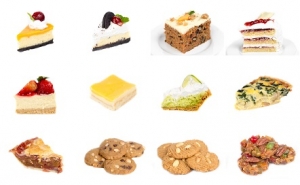 To an individual with an eating disorder like anorexia, fear foods are foods that Ed prohibits you to eat. Fear foods vary from individual to individual, day to day and sometimes don’t even make sense. No matter what the fear food is, Ed is right there to be sure the rules are followed and it is not eaten. Should a fear food really be feared? Will something bad happen if it is eaten? The answer is NO.
To an individual with an eating disorder like anorexia, fear foods are foods that Ed prohibits you to eat. Fear foods vary from individual to individual, day to day and sometimes don’t even make sense. No matter what the fear food is, Ed is right there to be sure the rules are followed and it is not eaten. Should a fear food really be feared? Will something bad happen if it is eaten? The answer is NO.
Learning to incorporate ALL food, including fear foods into your recovery is a great goal and one that is achievable. There is no such thing as bad food. As I went along in my recovery and added fear foods back into my diet, the fear and guilt I once had about eating them went away. Today I am fully recovered and have no guilt or fear around eating…no matter what it is. You too can get there. Ease your fear foods back into your diet one or two at a time (per day or over a few days). As you do, you and your recovery will be empowered and you will get stronger and stronger.
You may ask how do I achieve my goal of eating a fear food? While it is great to have this as a goal, it is important to figure out the steps you need to do to achieve the goal. Below is a chapter in my book directly related to the specific goal of eating a fear food.
Goals and Steps
A Chapter from Telling Ed No! by Cheryl Kerrigan ©
During my recovery, I knew I was taking steps forward, but sometimes it felt like I wasn’t moving at all. I had a hard time seeing progress when it seemed like I was mostly working on learning to eat and handle difficult feelings. Plus, I wanted to be done already! I wanted recovery now!
To help me stay focused on taking positive steps and to see the progress I really was making, I created lists of goals for myself: short-term (from one day to two weeks) and long-term (anything over three weeks). Then, to help me achieve those goals, I listed the steps I would need to take to accomplish each one.
Putting it all down on paper made the steps to recovery feel real and within my grasp. Checking off each step to a final goal gave me the inspiration and confidence to keep going. I could see the progress I was making, even if I couldn’t feel it. Having a “plan” was especially helpful when Ed would start in on me. I had concrete things to work towards, to visualize as aspects of my new, healthy life. And when I achieved them, I knew I was moving forward and kicking Ed’s butt. That put a smile on my face!
I utilized my treatment team, friends and family to help me come up with a list of goals, along with the steps necessary to achieve each one. Here is an example of one of my goals and steps I took to get there:
Goal: Eat a fear food
Steps to achieve the goal:
- With support (from my nutritionist, Amy, and Rachel), make a list of fear foods
- Pick one fear food and select at which meal or snack (the next day) I will eat it
- Ask Rachel to come to the grocery store with me
- Hold, touch, and purchase fear food
- Prepare fear food with Rachel
- Write in journal to express feelings before eating
- Ask Rachel to sit and eat meal with me
- Use positive self-talk, dogs as a distraction, and conversation during meal
- Eat and savor fear food
- Journal, talk to Rachel, and/or call therapist to express feelings around completing the goal
- Make commitment to complete goal again
- Success! Yeah!
——————————————————————————————————
So, remove the word “fear” from the word food and continue to fight hard for yourself and your recovery. You have the strength within you and you can do it!!!
With health, hope and strength,
Cheryl
####






